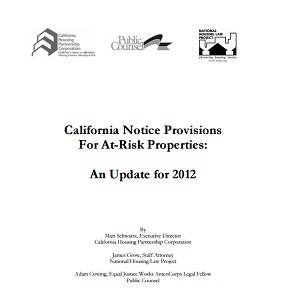As of November 2011, California has more than 438,000 apartments serving low income households earning less than 80% of area median income: 116,099 are subsidized and regulated by the US Department of Housing and Urban Development (HUD), 22,912 are subsidized by the US Department of Agriculture (USDA), 40,500 are public housing units, another 260,000 have received allocations of Low Income Housing Tax Credits (LIHTC) and an unknown number have received funding through local HOME, Community Development Block Grant (CDBG), redevelopment and other programs without relying on any of the above programs.
The termination of rental restrictions is a problem not only for the affected tenants, who face potential displacement and/or rent increases, but also for their communities, which will suffer a permanent loss of affordable homes. The impact of conversion is compounded by the scarcity of affordable rental housing in most parts of the state and the fact that it typically costs two to three times as much to replace an affordable apartment as to preserve it. In recognition of this impact, the federal government requires owners of these at-risk properties to provide notice to tenants and HUD. (Properties prepaying a HUD subsidized mortgage must also provide notices to state and local governments under federal law.) Finding that the federal notice laws

